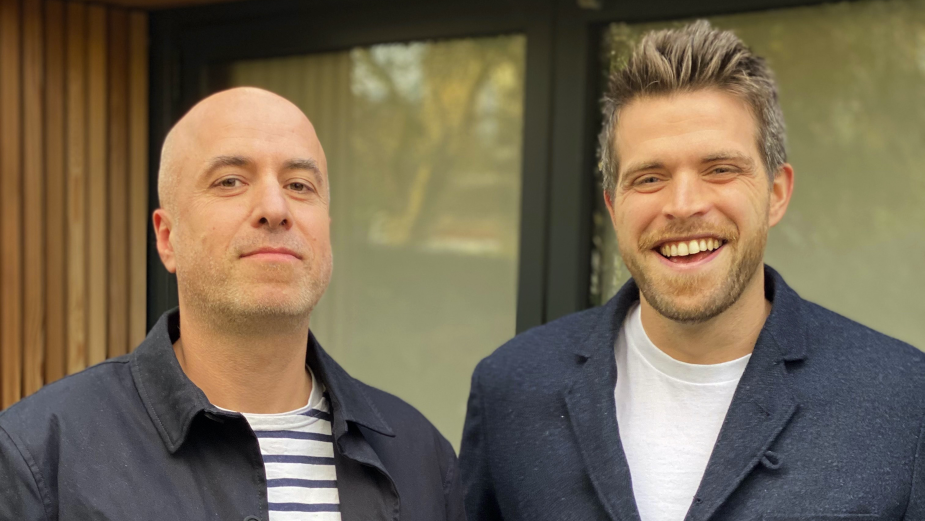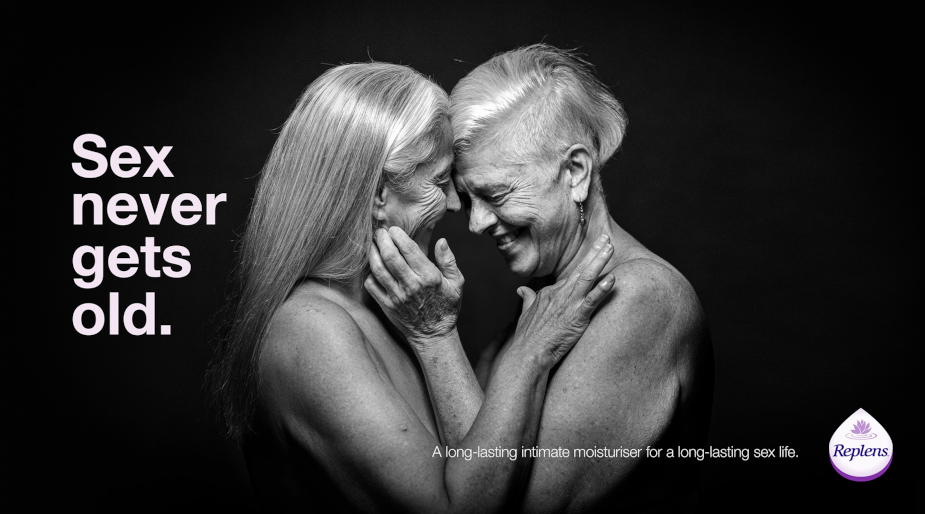
Dream Teams: Rob Bovington and Stephen Webley’s Watson and Holmes Routine

“He was working as a waitress in a cocktail bar…” begins Stephen Webley of his first encounter with Rob Bovington, but stops himself. “I’m a dad now, so I can get away with lazy jokes.” Rob was actually working on a placement in the same agency as Steve at Tribal DDB, back in the late noughties. Sitting near each other, they naturally began to collaborate. “We just kind of started spit-balling ideas for each other’s overheard briefs,” he says. Their creative director at the time suggested they work together. They gave it a go. ”I’ve been a permanent stain on his record for about 13/14 years now I guess.” Today, they’re creative directors working at The Gate London.
Steve instantly admired Rob. He reels off the ways: “He was smart. I could see he had the skills. A raw talent. A creative thinker. Great insights came easily to him. He was really confident. But not a dick (mostly).”
The feeling’s mutual. Rob immediately saw that Steve was ‘adored by his peers’. With him being senior while Rob was on a placement he remembers the pressure. “There was a lot to measure up against,” he says, “being super fluffy-tailed and all. Fortunately, we have a very similar sense of humour – you could say it’s niche. Not much has changed except I’m a lot less fluffy.”
The first project the pair worked on together was a set of banners for British newspaper the Guardian. In this process Steve taught Rob to wrangle his thoughts and ‘compress hyperbolic streams of consciousness into tiny little boxes’. Working in that sort of digital advertising was an interesting early challenge. “No one really likes a banner, but I think cutting your teeth on how to make a good one is good training for a career as a creative.” says Rob.
The first ‘official brief’ the team were given was probably a Volkswagen one, Steve thinks. “Maybe a scrappage scheme brief or something,” he says. “He wanted to do a Street Fighter II-influenced idea, and I think I wanted to do some interactive thing. We had a blast.”
Together the pair have found to be greater than the sum of their creative musings. “Like salt and vinegar crisps after a swim. I don’t know why it works; it just does,” reflects Rob.
“Rob’s a bit of a genius,” says Stephen, trying to explain why it works. “You see, I just complimented him. And he’ll do the same for me. Why do we do that? Well, I think we do it because we actually like each other. A good relationship - it’s a temperament thing. I think we feel comfortable saying stuff to each other that might sound stupid to the wrong ear. There’s many a good idea initially said as a joke that then gets discarded. We build on each other’s ideas, we have each other’s back, and we don’t both try to be the biggest voice in the room. You shouldn’t both present. It’s one or the other.”
No relationship is without its friction of course. While the pair rarely fight about the work, Rob notes that they might disagree about how to work. “It tends to be an executional thing, rather than strategic, an insight or an idea,” says Steve. “The work needs to contain a universal truth that can’t be shot down. And that’s something you should be able to agree on, because if it’s not self-evident (once you’ve found it), it’s not the truth. It’s when you start colouring in the details that personal subjectivity comes into it. That’s all fine, you can’t get too precious with that stuff. As long as the foundations are solid and the angle is fresh and exciting, we’ll always come to a consensus in the end, even if we have to thrash it out for a little bit until I realise Rob’s right.”
It’s an emotional partnership. Both are a ‘bag of nerves’ as Rob puts it. “And I can be an overly sensitive drill sergeant. There’s been sparks, and high-pitched squeals here and there, but this is usually followed by gushing apologies over text.”
Steve admits that the pair have been known to bicker like siblings, with the occasional storm-off, but they laugh about it afterwards. “Besides, you can’t keep up the façade of being a polite and reasonable adult all of the time, can you? That would be exhausting,” he says. “I’d say it’s an essential part of our creative process actually. We definitely laugh at the same stuff for sure.”
While Rob’s a habitual skim reader, Steve admits that his own fault is a tendency to overwrite.
Otherwise, they’ve learned one main ‘rule of engagement’. “Only one of us can pace up and down whilst pontificating and talking”, says Steve. There simply isn’t enough office space. You need to take turns to be Holmes, whilst the other adopts the Watson posture and listens, (then switch it up when they least expect it).”
The result of this dynamic is work like the Budweiser ‘Ice Cold Index’ in 2011.
Rob still thinks that’s one of their best pieces of work. It resulted in their first Cannes Lion, so he’s not alone in that opinion. “It was very different to what had come before,” he says. “The idea was more of a mechanic than a story, but it certainly worked – and it was copied many times afterwards. Which felt nice.”
His partner calls it ‘a slice of fantasy made real’. The idea: imagine if the temperature of the weather affected the price of the beer kin. It was a “kind of naughtiness that we never thought we’d get away with,” says Steve. “It sat right at the intersection of technology, digital and above-the-line.”
The HSBC work the pair created featuring British director, actor and presenter Richard Ayoade was a recent high note for them, “because it brought home a truth that we thought was important and touched a few nerves,” says Steve.
He also gives a nod to the Ribena spot they created, “with the farmer who thinks he’s an artist, because it was one of those things that your mum’s mate told her she liked, which is always nice. Rob will probably say Budweiser and Replens, Bud because it opened doors for us and Replens because it was breaking a taboo about sex and age that needed to be broken.”

“Some of the greatest ideas we’ve had are the ones that never saw the light of day,” says Rob, but he’s glad that Replens happened to survive. “We were asked to challenge the taboo of talking about the sex lives of those over 60. We kept it simple and told the truth elegantly. Sex never gets old.”
To get to elegant ideas like that, Rob googles quotes around relevant themes: expressions, idioms, and elegant articulations around complex human emotions. “People smarter than me tend to spark something,” he says.
Steve has a different source of inspiration: “Fear is the ultimate motivator,” he says. “A difficult meeting never feels great. That, and wanting to do work that we’re proud of and the clients are proud of - work that raises the bar. Other teams, there’s loads of great talent out there all fighting to do the best work. But when you see someone land an idea that changes the game, you’ve got to take your hat off. It’s not easy selling in ideas that don’t look like the other ideas that we’re used to. So fair play to them for that (the bastards).”
It would be hard for a pair like this not to become friends after all those years. “Yeah, we know each other inside out,” says Steve. “So we always confide in each other on a personal level. We go for cheeky beers after long brainstorming walks on the way home (we’ve always lived in the same neighbourhoods). And we’ve got young kids of a similar age, so there’s stuff in common there. That, and we both like video games, so we have to be careful not to get too distracted by that topic of conversation. He’ll probably tell you how we finish each other’s sentences, or know what the other one is thinking, which is often true, annoyingly.”
There are limits to Rob and Steve’s relationship. “Sure, we’ll have a pint after work,” says Rob. “But after spending the whole day putting the adland to rights – I think it’s healthy to shut up for a few hours and put the real world to rights with someone else.”
That said, sometimes the duo feel like they know each other better than their families. “Our partnership is a mini microclimate of creativity – full of sparks and oversharing,” says Rob.
There’s a kind of alchemy to a good creative partnership like this, explains Steve. “For us, and the agency, it’s not just a two-brains-are-better-than-one thing. With a longstanding creative collaboration, you’re hoping to bring a solution-solving partnership, that’s more-than-the sum-of-its-parts. All that experience, well-worn methodology and rapport means that hopefully, because you’ve got all the foreplay and pleasantries out of the way, you don’t just get better work, you get to better work faster. Efficiency.”
Working together has helped both Rob and Steve grow immeasurably. Rob attributes one particular dollop of wisdom to his partner’s tutelage: “Don’t pretend to know something. There’s no kudos to gain and it can get you in a world of trouble. Trust me.”
Steve’s grateful for the effect his partner has had on him too. “Rob rewired parts of my brain. In a good way. Integrity, loyalty, the importance of what we call fire-doors in the creative process. Oh, and I had never heard of Kedgeree before Rob cooked it for me. I was well into my 40s.”













